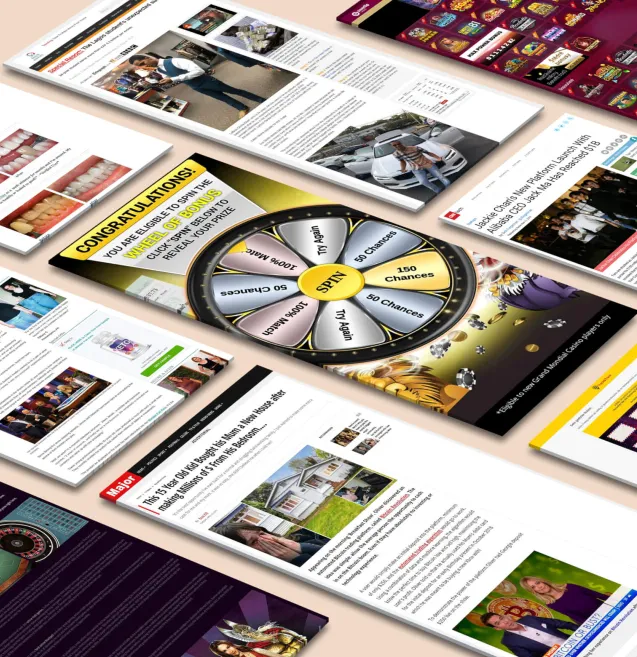
Our spy tools monitor millions of TikTok ads from over 55+ countries. Biggest TikTok Ad Library in E-commerce and Mobile Apps!
Try It FREEThe advertising and media landscape in 2026 looks radically different from what we've known before. You're navigating a world where political ad spending is projected to exceed $50 million across major markets, where AI-driven platforms are making split-second optimization decisions, and where privacy regulations are forcing you to completely rethink your data strategies.
I've watched the advertising industry transform over the years, but the pace of change heading into 2026 is unprecedented. The old playbook of reactive campaign management and delayed reporting simply won't cut it anymore. You need real-time visibility into competitor moves, predictive insights into market trends, and the ability to pivot your strategies before opportunities disappear.
Ad intelligence has evolved from a nice-to-have luxury to an absolute necessity. The platforms and tools available today give you unprecedented access to cross-channel insights spanning TV, digital, streaming, and political advertising. You can track early ad buys before they air, analyze creative strategies across multiple DMAs, and optimize your media buying decisions with data that was simply unavailable a few years ago.
The businesses that will thrive in this environment aren't necessarily those with the biggest budgets—they're the ones leveraging ad intelligence trends 2026 is bringing to make smarter, faster, and more strategic decisions than their competitors.
Political ad spending 2026 is set to reach unprecedented levels during the midterm elections, with projections exceeding $50 million across more than 35 designated market areas. This massive influx of campaign dollars creates a unique window of opportunity for advertisers, media sellers, and political campaigns to capitalize on sophisticated political advertising intelligence platforms.
The landscape has shifted dramatically from traditional post-campaign analysis to predictive, forward-looking intelligence. Platforms like MediaRadar now track early ad buys rather than just aired advertisements, giving you a critical advantage in understanding market dynamics before they fully materialize. This early visibility allows you to identify emerging spending patterns, anticipate inventory shortages, and position your offerings strategically.
Designated Market Area (DMA) targeting has become the cornerstone of successful political campaigns in 2026. Early access to political ad buy data enables media sellers to:
The speed at which PAC ad space gets booked following major political events—debates, primary results, breaking news—demonstrates the competitive intensity of this market. You need real-time intelligence to capture these fleeting opportunities.
Local media owners face a critical challenge: pricing inventory to maximize revenue without leaving money on the table or pricing themselves out of the market. Advanced political advertising intelligence provides the data foundation for strategic pricing decisions during high-demand periods.
You can analyze historical spending patterns, track competitor pricing strategies, and monitor early booking velocity to establish dynamic pricing models. When you identify a surge in political interest within your DMA, you can adjust rates proactively rather than reactively, securing premium deals before inventory becomes scarce.
Supply path optimization is reshaping how advertisers approach programmatic advertising in 2026. You're seeing buyers consolidate their SSP partnerships, moving from working with 10-15 supply-side platforms down to just 3-5 preferred partners. This consolidation means SSPs must prove their value through transparency, unique inventory access, and superior performance metrics. The platforms that survive this culling process are those offering direct publisher relationships and minimal intermediary fees.
The shift toward programmatic buying is fundamentally changing TV upfront negotiations. Traditional upfronts required you to commit massive budgets months in advance with limited flexibility. Now, programmatic infrastructure allows you to reserve inventory while maintaining the ability to adjust campaigns based on real-time performance data. You can test creative variations, shift budgets between dayparts, and optimize toward specific audience segments—all within the same upfront commitment framework.
Programmatic advertising 2026 strategies must account for the accelerated timeline of cookie deprecation. Google's Privacy Sandbox initiatives have moved from experimental to essential, forcing you to adapt your targeting and measurement approaches. First-party data strategies are no longer optional—they're the foundation of effective programmatic campaigns.
You need to implement these alternative targeting methods:
The privacy-first environment demands new measurement frameworks. You're investing in clean room technologies that allow campaign analysis without exposing individual user data. Attribution models are shifting from deterministic tracking to statistical modeling that respects user privacy while still providing actionable insights for budget optimization.
The advertising landscape demands tools that can track campaigns across multiple channels simultaneously. Cross-channel ad intelligence platforms have emerged as essential infrastructure for agencies, brands, and media firms seeking comprehensive visibility into competitive advertising activities.
The AdImpact platform represents the evolution of modern ad intelligence, offering integrated insights that span TV, digital, streaming, and political advertising. You gain access to creative catalogs that aggregate ad content from diverse channels, allowing you to analyze competitor strategies without manually monitoring each platform. This consolidated approach saves countless hours of research while providing deeper strategic insights than single-channel tracking ever could.
Real-time visibility transforms how you approach media planning and competitive analysis. When you can see exactly where competitors are placing ads, how much they're spending, and which creative executions they're testing, you make informed decisions rather than educated guesses. Agencies use this data to identify market gaps, optimize client budgets, and justify strategic recommendations with concrete evidence.
The metadata accompanying ad placements provides granular detail that elevates your analysis beyond surface-level observations. You access:
Political campaigns benefit particularly from these platforms during election cycles. The ability to track opponent spending across markets, identify underserved DMAs, and adjust messaging in response to competitive activity creates tactical advantages that can determine election outcomes.
Brands leveraging cross-channel ad intelligence platforms report improved ROAS through better-informed media mix decisions. You identify which channels your competitors prioritize, spot emerging platforms before they become saturated, and allocate budgets based on actual market dynamics rather than historical assumptions. The Ad Intelligence Trends That Will Shape 2026 point toward platforms that integrate even more data sources, providing unprecedented visibility into the complete advertising ecosystem.
In this evolving landscape, specialized tools like the Instream by Anstrex allow brands to spy on top TikTok ad campaigns. By replicating successful strategies from these high-converting ads, businesses can build a more profitable model while keeping pace with the latest trends in digital advertising.
Multi traffic source advertising has become essential for brands seeking to maximize their market penetration in 2026. You can't rely on a single channel anymore—your audience fragments across linear TV, streaming platforms, social media, search engines, and programmatic display networks. Each traffic source delivers unique engagement patterns and audience behaviors that, when combined strategically, create a comprehensive reach you simply can't achieve through isolated campaigns.
The power of a robust cross-channel strategy lies in understanding how different traffic sources complement each other. Search traffic captures high-intent users actively seeking solutions. Social media traffic builds brand awareness and drives engagement through visual storytelling. Display advertising reinforces your message through strategic retargeting. Connected TV reaches cord-cutters who've abandoned traditional cable. When you orchestrate these sources together, you create multiple touchpoints that guide prospects through their entire decision journey.
Effective segmentation requires you to map audience characteristics to the most appropriate traffic sources:
You need granular data from ad intelligence platforms to identify which traffic sources deliver the highest engagement for each audience segment. Track performance metrics specific to each source—click-through rates for display, view-through rates for video, engagement rates for social—then allocate budget dynamically based on real-time performance indicators. This data-driven approach ensures you're not spreading resources too thin across underperforming channels while missing opportunities in high-converting traffic sources.
Maximize ROAS multi-channel ads by implementing coordinated campaigns that synchronize messaging across platforms while accounting for each channel's unique performance metrics. You need to establish unified tracking systems that attribute conversions accurately across touchpoints, allowing you to identify which channel combinations deliver the highest returns. This data-driven approach enables budget reallocation in real-time based on performance signals rather than predetermined allocations.
Integrated native push pop campaigns create powerful synergies when executed strategically. Native ads build brand awareness and establish credibility through contextual placements, while push notifications drive immediate action from engaged users. Pop campaigns capture attention at critical decision moments. When you coordinate these formats within a single campaign framework, you create multiple touchpoints that guide users through the conversion funnel more effectively than isolated channel efforts.
The cross-channel marketing strategy December demands particular attention due to heightened consumer spending and increased competition for ad inventory. You should begin planning your December campaigns in September, securing premium placements before prices surge. Your strategy needs to account for:
December's unique consumer behavior patterns require you to adjust bidding strategies dynamically. Monitor inventory availability closely as premium placements fill quickly during peak shopping days. You'll find that integrated campaigns combining native content for discovery, push notifications for reminders, and pop ads for final conversion prompts consistently outperform single-channel approaches during high-stakes seasonal periods.
Testing creative variations across channels simultaneously reveals which messaging resonates strongest with your audience segments. You can then amplify successful creative elements across all channels, creating a cohesive brand experience that reinforces your value proposition at every customer interaction point.
Agentic AI will fundamentally transform how you approach strategic media planning 2026+ by automating complex campaign optimization tasks that currently require manual intervention. These autonomous systems will analyze cross-channel performance data, adjust bidding strategies in real-time, and predict audience behavior patterns before they emerge. You'll see ad intelligence platforms integrating these capabilities to handle everything from creative testing to budget allocation without constant human oversight.
Sovereign AI adoption will reshape your data management strategies as privacy regulations tighten globally. You'll need to process advertising data within specific geographic boundaries, requiring partnerships with localized ad intelligence providers who maintain infrastructure in your target markets. This shift protects consumer privacy while ensuring compliance with regional data protection laws.
Privacy-first advertising frameworks will demand new approaches to audience targeting and measurement. You'll rely more heavily on contextual intelligence, first-party data strategies, and privacy-preserving technologies that deliver insights without compromising individual user identities. Ad intelligence tools will evolve to provide aggregated insights that respect these boundaries while maintaining campaign effectiveness.
Physical AI integration with connected devices will open new advertising channels through smart home systems, autonomous vehicles, and IoT-enabled retail environments. You'll need intelligence platforms that track ad performance across these emerging touchpoints, measuring engagement in physical spaces alongside traditional digital metrics. Future advertising trends point toward this convergence of digital intelligence with real-world consumer interactions.
The Ad Intelligence Trends That Will Shape 2026 represent a fundamental shift in how you'll approach advertising strategy and execution. You've seen how political advertising intelligence, programmatic evolution, and cross-channel platforms are converging to create unprecedented opportunities for those willing to adapt.
Your competitive advantage depends on action, not observation. The advertisers who thrive will be those who:
The ad intelligence summary 2026 is clear: data-driven decision-making isn't optional anymore. You need integrated insights spanning TV, digital, streaming, and political advertising to compete effectively. The tools exist today to give you that visibility.
Start small if you must, but start now. Test one new ad intelligence platform. Experiment with cross-channel attribution. Analyze your competitors' spending patterns. Each step forward compounds your competitive position.
The advertising landscape will continue evolving beyond 2026, but the principles remain constant: know your market, understand your competition, and act on intelligence faster than others. Your success depends on how quickly you embrace these trends and integrate them into your daily operations.
Receive top converting landing pages in your inbox every week from us.
Trending
Year-end campaigns don’t have to suffer from ad fatigue. Explore innovative ways to revive your marketing efforts with fresh creatives, updated messaging, and smarter targeting. Learn how to balance innovation with consistency to keep your audience engaged and conversions steady. Perfect for advertisers looking to finish the year with renewed energy and impactful results.
Dan Smith
7 minNov 27, 2025
Tips & Tricks
This blog reveals unexpected and creative ways to use AI for driving success in holiday marketing campaigns. It explores how AI can enhance personalization, automate ad optimization, and predict consumer trends for better performance. Readers will learn innovative tactics to boost engagement, conversions, and ROI during the festive season. Perfect for marketers looking to make their holiday campaigns smarter and more impactful.
Elena Morales
7 minNov 24, 2025
Quick Read
This blog uncovers how brands can maximize their reach by leveraging cross-platform video ads on TikTok and YouTube. It explains how to adapt creative content for each platform while maintaining a consistent brand message. Readers will gain insights into audience targeting, engagement metrics, and performance tracking to optimize results. Perfect for marketers aiming to boost visibility and drive conversions through dynamic video advertising.
David Kim
7 minNov 17, 2025




